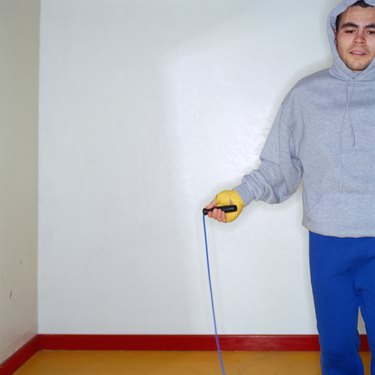
Pain in the bones of the feet can signal a number of different problems, from injuries to foot defects to improper footwear. Foot pain can severe and crippling, and make walking even short distances difficult. If high-impact activities such as jumping rope and running trigger your foot pain, take a look at your symptoms and contributing factors to get to the bottom of your foot woes.
Injuries to the Foot
Video of the Day
The bones in your feet may ache and throb during or after high-impact exercises if there is a stress fracture, a broken bone or some other sort of injury. A bone spur or broken toe can cause severe foot pain, as can plantar fasciitis. Bursitis in the heel of the foot can also cause sharp pains when running, jumping rope or performing other activities and exercises.
Video of the Day
Foot Defects and Diseases
An abnormality of the bones in the feet can cause foot pain during high-impact activity. If you have a bunion or hammertoe, flat feet/fallen arches, inflammation of the foot known as metatarsalgia, or a condition known as tarsal tunnel syndrome, says MayoClinic.com. Diseases such as osteoarthritis and rheumatoid arthritis can also cause pain in the bones of the feet that can be worsened by activities such as running and jumping rope.
Poor Footwear
Running and jumping rope put a major strain on the bones in the feet, as they bear the brunt of harsh impact from the whole body. Wearing shoes that don't provide ample cushioning and support for the feet during such high-impact exercises can cause pain and injury to the bones in the feet. Make sure that you wear sturdy athletic shoes with good cushioning and arch support when performing these activities.
Coping With Foot Pain
If foot pain troubles you, take a break from running, jumping rope and other high-impact activities. Stick to walking, swimming, biking, yoga or other low-impact exercises choices. Try an over-the-counter pain reliever and apply ice to the painful areas of the foot. If your foot pain doesn't improve, see your doctor for a diagnosis and treatment recommendation to get you hitting the pavement pain-free.